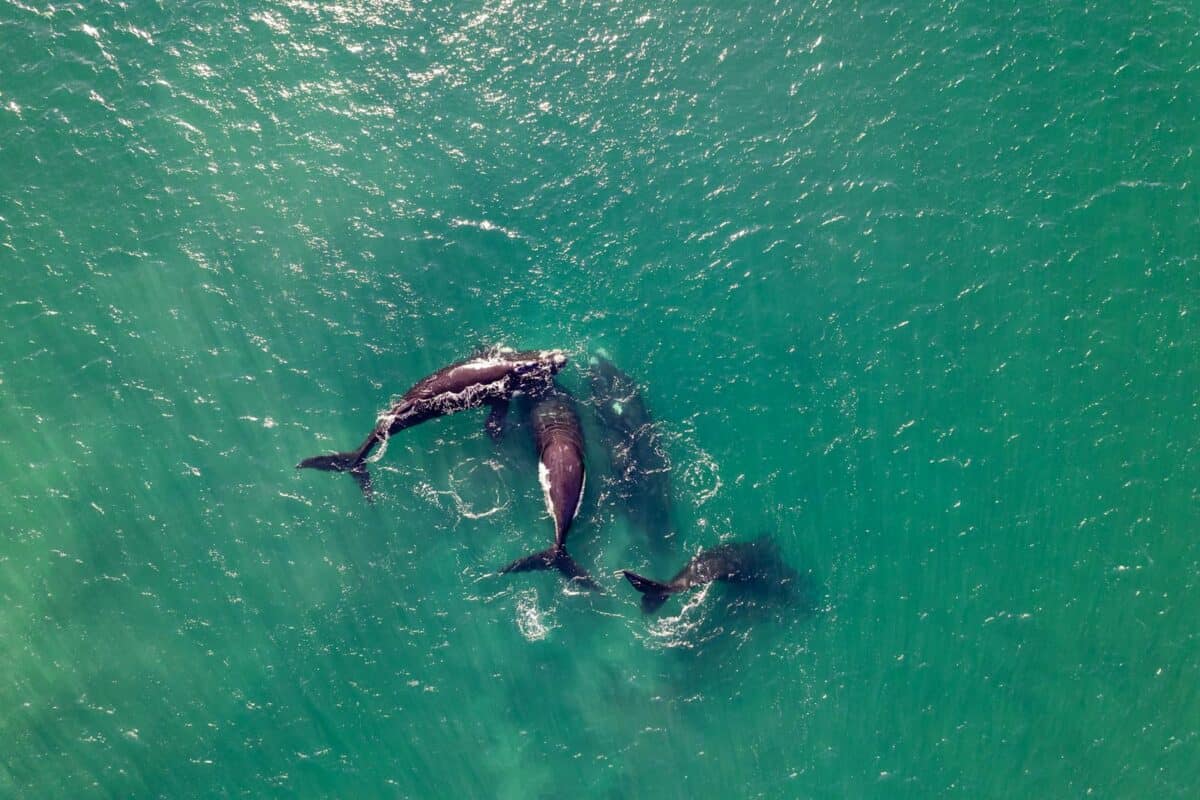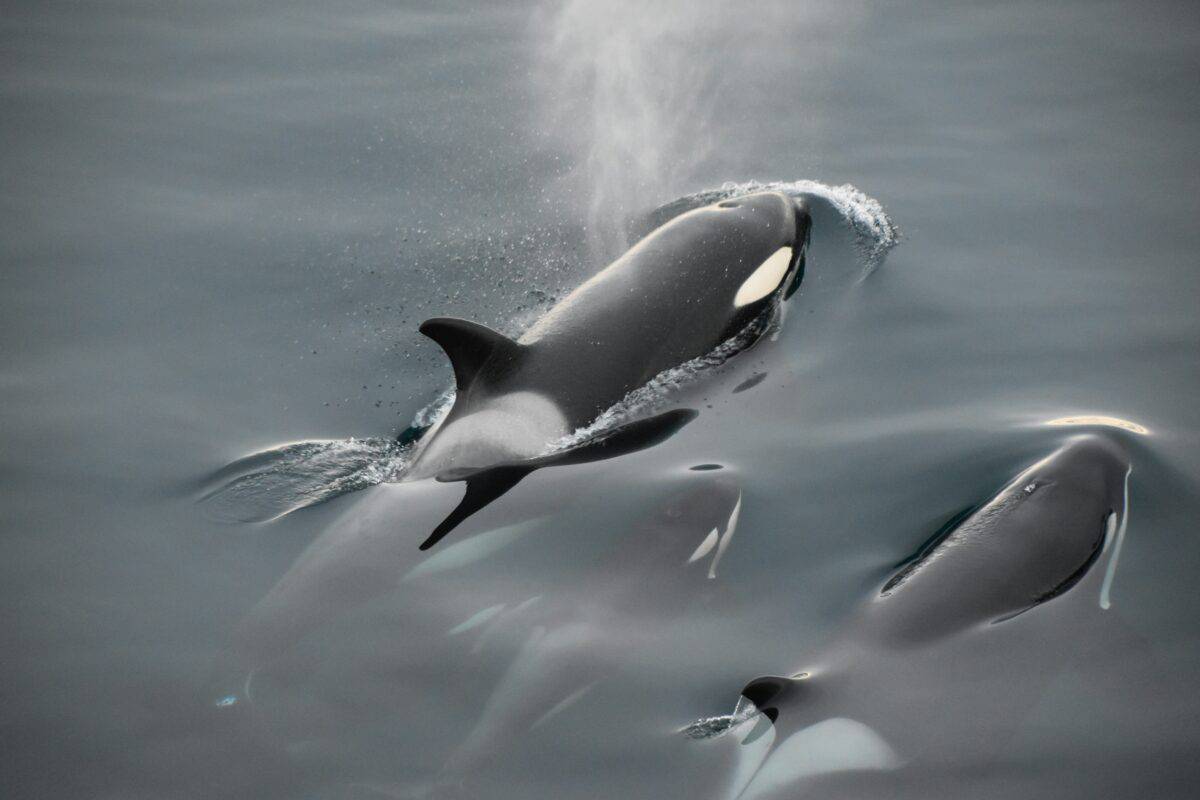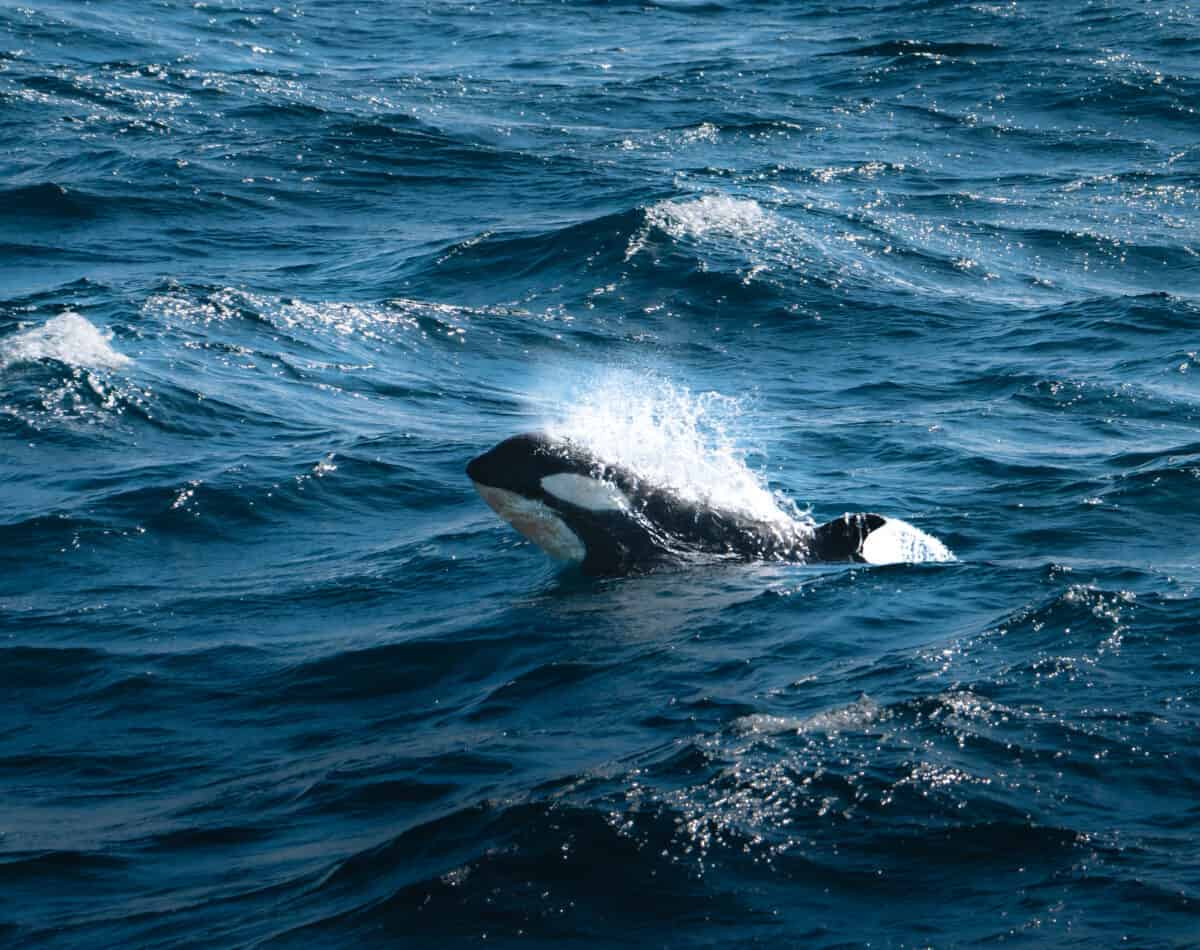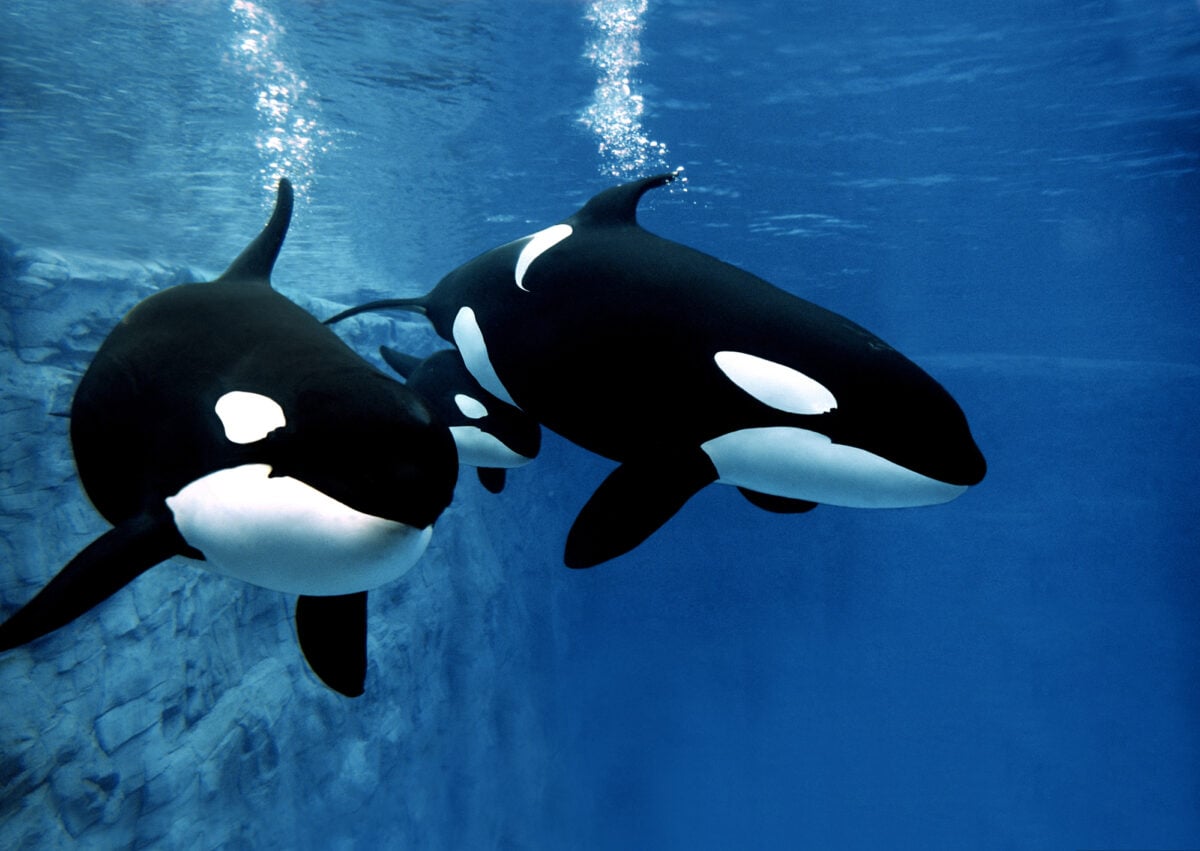In January 2023, marine researchers and whale watchers witnessed an extraordinary event off the coast of Washington state – the largest congregation of orcas, or killer whales, ever documented in U.S. waters. This remarkable gathering included approximately 75 orcas from different pods moving together in what experts described as a “superpod.” The sighting not only broke previous records but also provided researchers with unprecedented opportunities to study orca social behavior, feeding patterns, and pod dynamics. This article explores this exceptional event, its significance for marine science, and what it reveals about these intelligent ocean predators.
The Historic Superpod Sighting

The record-breaking orca congregation was spotted in the waters of the Salish Sea, specifically in the Strait of Juan de Fuca between Washington state and Vancouver Island. Marine biologists from the Center for Whale Research and the National Oceanic and Atmospheric Administration (NOAA) confirmed that approximately 75 orcas from at least three distinct pods were observed traveling, socializing, and hunting together. Typical orca pod sizes in this region range from 5-30 individuals, making this gathering more than double the size of normal large groups. The sighting occurred during a seasonal salmon run, which likely contributed to the unusual congregation as multiple pods converged on abundant food resources.
Understanding Orca Pod Structures

Orcas typically live in matrilineal family groups called pods, led by the oldest female. In the Pacific Northwest, resident orcas organize into what scientists classify as J, K, and L pods – the Southern Resident killer whale community. Each pod has its own distinctive vocalizations, hunting techniques, and cultural practices that are passed down through generations.
The superpod observation included members from these resident pods alongside transient (or Bigg’s) orcas, which typically hunt marine mammals rather than fish. This unusual mixing of different ecotypes further highlighted the exceptional nature of the gathering, as these groups rarely interact so extensively in normal circumstances.
Scientific Significance of the Superpod

The unprecedented size of this orca gathering provided marine biologists with a rare research opportunity. Scientists were able to conduct extensive photo-identification work, documenting individual whales through their unique dorsal fin shapes and saddle patch patterns. This documentation allowed researchers to confirm which specific pods and individuals participated in the gathering.
Additionally, underwater acoustic equipment captured extensive recordings of the complex vocalizations occurring during this social event. These recordings revealed previously undocumented communication patterns that occur only when multiple pods interact, offering new insights into orca language and social bonds. The event also permitted observation of rare cooperative hunting behaviors that emerge only during large-scale gatherings.
Potential Causes for the Massive Gathering

Marine biologists have proposed several theories to explain this exceptional congregation. The primary hypothesis centers around an unusually abundant salmon run that provided sufficient food resources to support multiple pods in one area. Chinook salmon, the preferred prey of resident orcas, were documented in higher-than-normal numbers during this period. Another theory suggests changing ocean conditions may have concentrated prey fish in specific areas, creating a natural gathering point.
Some researchers also propose that the superpod may have formed partly for social purposes, as orcas are highly social animals that engage in complex communal behaviors beyond hunting. The unusual mixing of resident and transient pods also points to exceptional oceanographic or ecological circumstances that temporarily overcame the typical separation between these distinct orca communities.
Technology That Enabled the Discovery

Advanced technology played a crucial role in documenting this historic orca gathering. The initial sighting came from a combination of whale watching boats equipped with hydrophones and a network of underwater listening stations maintained by NOAA and conservation organizations. Once alerted, researchers deployed drones with high-resolution cameras that captured aerial footage, allowing comprehensive counting and identification of individuals.
Satellite tracking of previously tagged whales helped confirm the unusual movement patterns leading to the congregation. Without these technological tools, the full scale and significance of the gathering might never have been fully appreciated or documented for scientific study. The combination of citizen science observations and professional research infrastructure created a comprehensive picture of this remarkable event.
Ecological Implications

The massive orca gathering potentially indicates positive ecological developments in the region. For the endangered Southern Resident killer whale population, which has struggled with food scarcity in recent decades, such a gathering around abundant prey could signal temporarily improved feeding conditions.
Researchers documented extensive foraging behavior during the event, with multiple successful hunts observed. However, some marine biologists caution that such unusual congregations could also result from changing ocean conditions due to climate change, potentially indicating ecosystem disruption rather than health. The event prompted increased monitoring of regional salmon populations and ocean conditions to better understand whether this gathering represented an anomaly or a response to changing marine ecosystems.
Conservation Status and Concerns

While the superpod sighting generated excitement, it also occurred against the backdrop of serious conservation concerns for orcas in the region. The Southern Resident killer whale population, which contributed many individuals to the gathering, remains endangered with only approximately 75 total members across all three pods. These resident orcas face threats from diminished salmon stocks, vessel noise, water pollution, and bioaccumulation of toxins.
The Bigg’s (transient) orcas that were also part of the superpod have shown population increases in recent years, creating a contrast between the health of different orca communities. Researchers are carefully analyzing whether the gathering indicates improved conditions for the endangered residents or represents merely a temporary convergence that doesn’t change their overall precarious status.
Social Behavior Observed in the Superpod

Beyond hunting, researchers documented remarkable social interactions during the superpod event. Multiple instances of what appears to be play behavior were recorded, including synchronized breaching, tail slapping, and object carrying. Particularly noteworthy were observations of adult orcas from different pods engaging in what scientists describe as “greeting ceremonies” – ritualized behaviors that occur when separate groups come together.
Researchers also documented extensive physical contact between individuals from different family groups, vocalizations unique to multi-pod gatherings, and what appeared to be teaching behaviors where adults demonstrated hunting techniques to juveniles from other pods. These observations support theories that superpod gatherings serve important social and cultural functions beyond simply efficient hunting.
Historical Context of Large Orca Gatherings

While this gathering set a record for documented orca numbers in U.S. waters, indigenous communities of the Pacific Northwest have oral histories describing similar large-scale orca congregations dating back centuries. The Lummi Nation, in particular, has traditional knowledge of “orca festivals” where many families of qwe’lhol’mechen (the orca in Coast Salish language) would gather in specific locations during particular seasons.
Historical records from early European explorers also mention large killer whale gatherings, though without the precise counting methods available today. The previous documented record for the region was a 2010 sighting of approximately 50 orcas near Vancouver Island. Globally, larger gatherings have been reported in Norwegian waters, where congregations of over 100 orcas have been documented during herring runs.
Public Response and Educational Impact

News of the record-breaking superpod quickly captured public imagination and media attention. Whale watching operations reported unprecedented interest, though management agencies implemented special viewing restrictions to minimize disturbance to the gathering. Educational initiatives leveraged the heightened public interest to raise awareness about orca conservation challenges. The Pacific Whale Watch Association collaborated with research organizations to develop special educational materials explaining the significance of the event.
Social media platforms buzzed with images and videos of the gathering, significantly boosting engagement with marine conservation content. This public response demonstrated how exceptional natural events can create valuable opportunities for conservation education and awareness-building among broader audiences who might not otherwise engage with marine wildlife issues.
Ongoing Research Projects Stemming from the Event

The superpod sighting catalyzed several new research initiatives. A collaborative study between the University of Washington and the Center for Whale Research launched to analyze the extensive acoustic recordings gathered during the event, focusing on identifying pod-specific dialects and potential “shared language” that emerges during multi-pod interactions. Another research project is examining prey-sharing behaviors observed during the gathering, investigating whether orcas from different pods with different hunting specializations may exchange information or techniques during these rare meetings.
Genetic researchers also collected environmental DNA (eDNA) from the waters where the gathering occurred, hoping to analyze sloughed skin cells and other biological materials to better understand the genetic relationships between the gathered pods. These studies will likely produce scientific findings for years to come, making the superpod’s scientific impact extend well beyond the event itself.
Future Monitoring for Similar Events

Following this historic gathering, marine researchers have established enhanced monitoring protocols to detect and document any future superpod events. The Orca Network, a citizen science organization, has expanded its volunteer observer network along the Washington and British Columbia coasts. NOAA has allocated additional resources for aerial surveys during salmon runs, when such gatherings may be more likely.
Underwater acoustic monitoring stations have been upgraded to better capture and identify orca vocalizations across broader geographic areas. These improved monitoring capabilities will help scientists determine whether the 2023 superpod was a rare anomaly or potentially part of a larger pattern of changing orca behavior. The establishment of these monitoring systems represents an important scientific legacy of the record-breaking event, potentially enabling documentation of similar gatherings that might otherwise go undetected or be incompletely recorded.
Conclusion: The Continuing Impact of an Extraordinary Marine Event

The largest orca pod ever recorded off the U.S. coast represents far more than just a numerical record – it offers a window into the complex social lives and ecological relationships of these remarkable marine predators. This extraordinary gathering continues to yield scientific insights through ongoing analysis of data collected during the event, from acoustic recordings to behavioral observations.
For conservation efforts, the superpod provided both a moment of hope and a reminder of the interconnectedness of marine ecosystems and the need for comprehensive protection measures. Perhaps most importantly, this record-breaking gathering captured public imagination, creating invaluable opportunities to connect people with the ocean and its remarkable inhabitants, potentially fostering the next generation of marine conservationists and researchers inspired by the day dozens of orcas came together in an unprecedented gathering.
- Discover the Secrets of a New Extinct Elephant Species - August 22, 2025
- The Perfect Pet for Each Zodiac Sign - August 21, 2025
- 7 Steps to Planting Admirably Beautiful Bluebonnets - August 18, 2025

